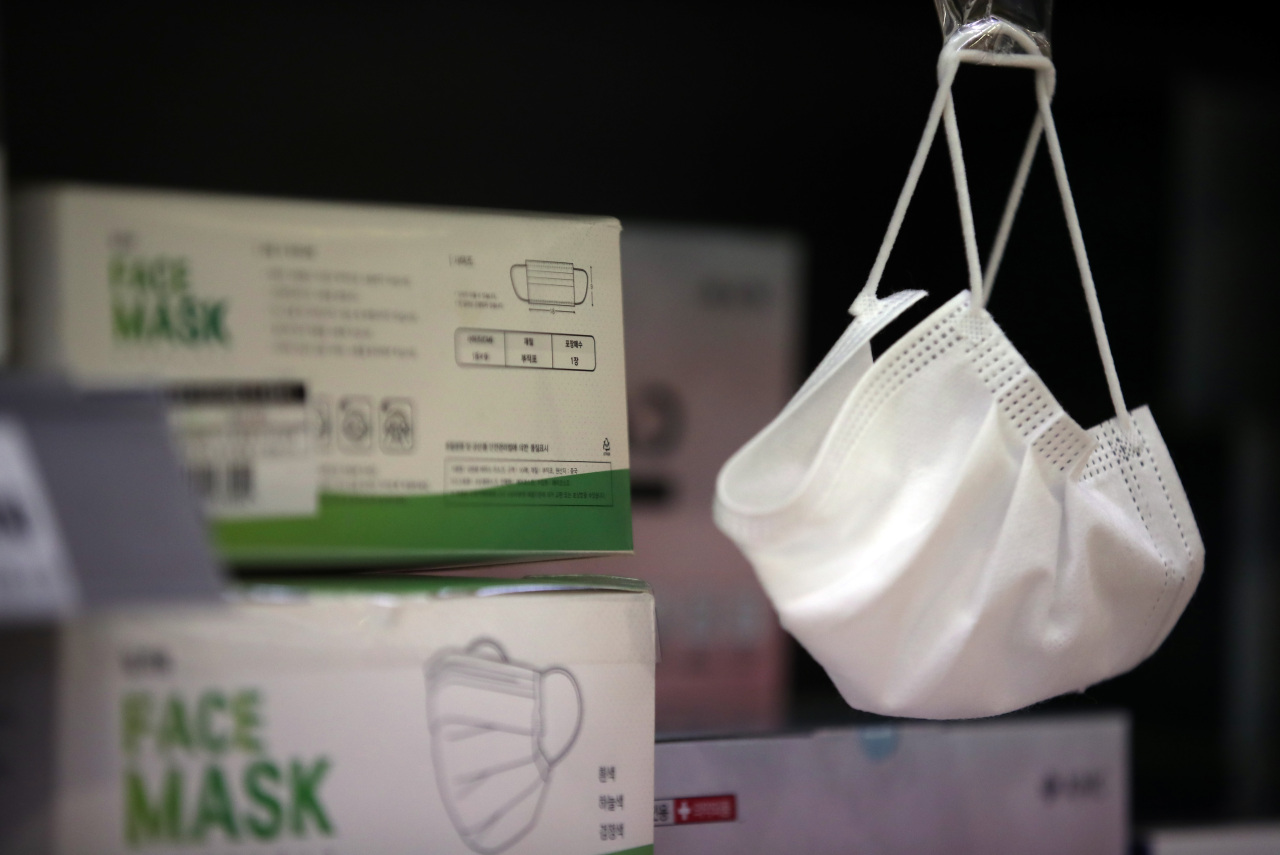Cases of non-COVID-19 infections sharply down: study
By Ko Jun-taePublished : Nov. 11, 2020 - 14:26

Social distancing protocols and heightened attention toward person hygiene from prolonged COVID-19 pandemic has resulted in sharply lower cases of other infectious diseases, a study found Wednesday.
According to a study led by Dr. Kang Ji-man, a pediatrics professor at Yonsei University Severance Hospital, measures introduced to reduce the spread of COVID-19 have helped people avoid other infectious diseases such as chicken pox, measles and mumps.
From February to July this year, South Korea reported 279.01 chicken pox cases per 1 million people, down 38.4 percent from the average 723.47 cases per million recorded between 2016 and 2019.
Prevalence of mumps virus reached 111.01 cases per million for the same five-month period, down 58.7 percent from 180.22 cases from 2016 to last year. Pneumococcal pneumonia was reported at a rate of 3.2 cases per million this year, down from 5.56 cases per million reported in earlier years.
The report counts for scarlet fever dropped from 163.57 cases per million to 25.87 cases, whereas the figure for pertussis fell from 3.66 cases per million to 1.25 cases.
The figures for other viral infections such as enterovirus and adenovirus also significantly dropped thanks to non-pharmaceutical interventions introduced during the COVID-19 pandemic, the study said.
South Korea reported an average of 1,229.25 such cases a year between 2016 to 2019, but the number of reports nosedived to 39 from February to July this year. The figure for adenovirus also shrank from an average of 4,827.5 cases to 914 cases this year.
The research was based on comparison of infectious disease counts from February to July of this year against counts reported for the corresponding periods between 2016 and 2019.
While there were studies in the past that researched the counts of infectious diseases in specific hospitals or regions, the latest study is the first that compares the infectious disease prevalence on a national scale, the research team said.
“Personal sanitation measures like mask wearing and hand washing have reduced the unnecessary socioeconomic costs of diagnosis of testing,” Kang said in a statement.
“At the same time, it was evidenced from the study that (these measures) can help reduce the spread of other respiratory diseases usually prevalent in the winter.”
By Ko Jun-tae (ko.juntae@heraldcorp.com)
According to a study led by Dr. Kang Ji-man, a pediatrics professor at Yonsei University Severance Hospital, measures introduced to reduce the spread of COVID-19 have helped people avoid other infectious diseases such as chicken pox, measles and mumps.
From February to July this year, South Korea reported 279.01 chicken pox cases per 1 million people, down 38.4 percent from the average 723.47 cases per million recorded between 2016 and 2019.
Prevalence of mumps virus reached 111.01 cases per million for the same five-month period, down 58.7 percent from 180.22 cases from 2016 to last year. Pneumococcal pneumonia was reported at a rate of 3.2 cases per million this year, down from 5.56 cases per million reported in earlier years.
The report counts for scarlet fever dropped from 163.57 cases per million to 25.87 cases, whereas the figure for pertussis fell from 3.66 cases per million to 1.25 cases.
The figures for other viral infections such as enterovirus and adenovirus also significantly dropped thanks to non-pharmaceutical interventions introduced during the COVID-19 pandemic, the study said.
South Korea reported an average of 1,229.25 such cases a year between 2016 to 2019, but the number of reports nosedived to 39 from February to July this year. The figure for adenovirus also shrank from an average of 4,827.5 cases to 914 cases this year.
The research was based on comparison of infectious disease counts from February to July of this year against counts reported for the corresponding periods between 2016 and 2019.
While there were studies in the past that researched the counts of infectious diseases in specific hospitals or regions, the latest study is the first that compares the infectious disease prevalence on a national scale, the research team said.
“Personal sanitation measures like mask wearing and hand washing have reduced the unnecessary socioeconomic costs of diagnosis of testing,” Kang said in a statement.
“At the same time, it was evidenced from the study that (these measures) can help reduce the spread of other respiratory diseases usually prevalent in the winter.”
By Ko Jun-tae (ko.juntae@heraldcorp.com)








![[Graphic News] More Koreans say they plan long-distance trips this year](http://res.heraldm.com/phpwas/restmb_idxmake.php?idx=644&simg=/content/image/2024/04/17/20240417050828_0.gif&u=)
![[KH Explains] Hyundai's full hybrid edge to pay off amid slow transition to pure EVs](http://res.heraldm.com/phpwas/restmb_idxmake.php?idx=644&simg=/content/image/2024/04/18/20240418050645_0.jpg&u=20240419100350)





![[From the Scene] Monks, Buddhists hail return of remains of Buddhas](http://res.heraldm.com/phpwas/restmb_idxmake.php?idx=652&simg=/content/image/2024/04/19/20240419050617_0.jpg&u=20240419175937)

![[KH Explains] Hyundai's full hybrid edge to pay off amid slow transition to pure EVs](http://res.heraldm.com/phpwas/restmb_idxmake.php?idx=652&simg=/content/image/2024/04/18/20240418050645_0.jpg&u=20240419100350)

![[Today’s K-pop] Illit drops debut single remix](http://res.heraldm.com/phpwas/restmb_idxmake.php?idx=642&simg=/content/image/2024/04/19/20240419050612_0.jpg&u=)